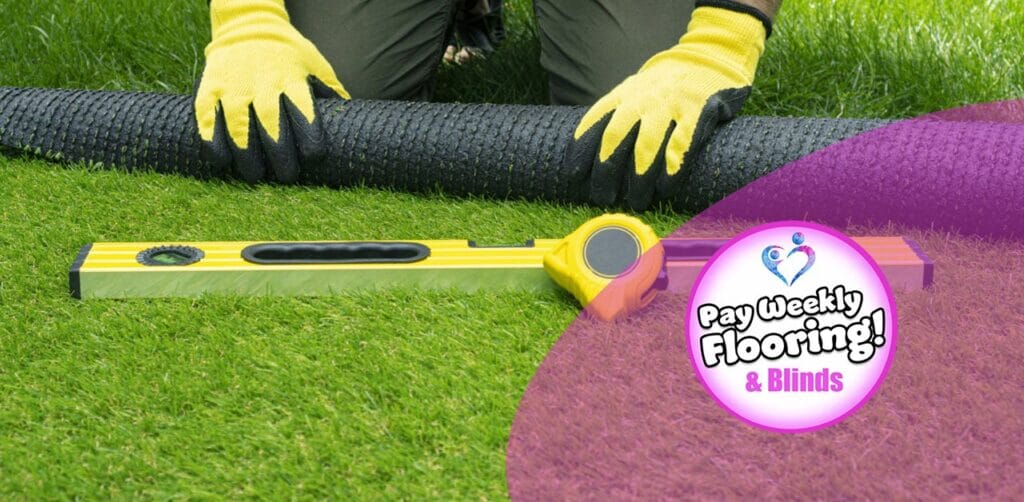The popularity of artificial grass makes everyone want to install it and make their dirty lawn beautiful without any maintenance headaches. It is a great alternative to original grass in many ways. However, some believe artificial turf is costly and hard to install.
Installing artificial turf by yourself can save you from spending extra money. The process is pretty simple, just take a look at the following steps of how to lay artificial turf on soil.
Tools Checklist
Before starting the installation process, ensure that you have all the required tools to lay artificial grass on the soil. Here’s what you will need:
- Shovel
- Screed bar
- Landscaping pins
- Wheelbarrow
- Stiff broom
- Measuring tape
- Sharp utility knife
- Rake
Materials Checklist
While you are preparing the tools, grab your hands on a few materials as well. Other than an affordable artificial turf, you will need some other materials during the installation process.
- Crushed stone aggregate
- Sharp sand for levelling
- Weed barrier
- Artificial grass
- 40mm x 2.5mm carpet tacks
- Jointing tape (if required)
- Artificial grass glue
- Kiln-dried sand for infill
Step 1: Get the Surface Ready
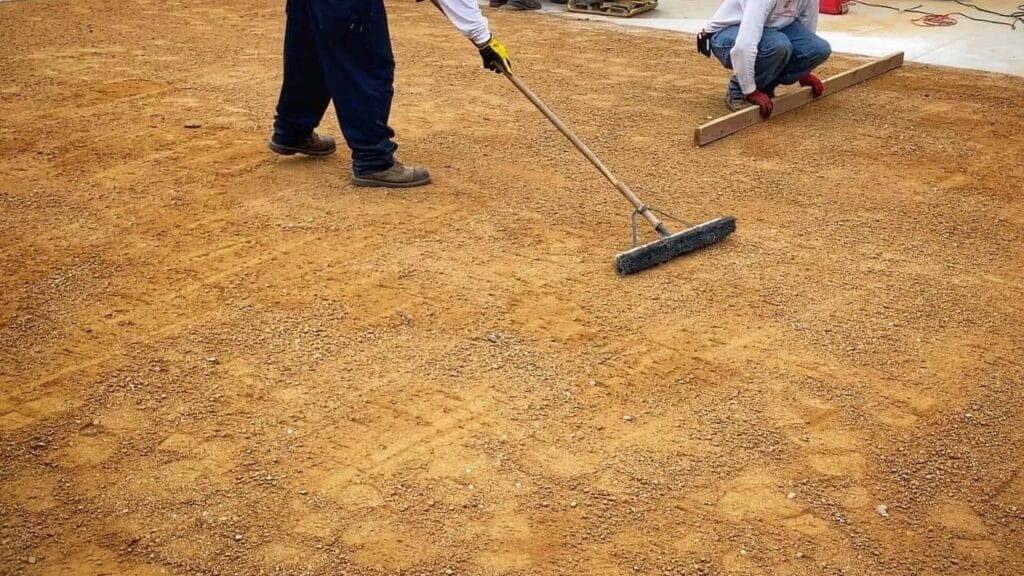
The perfect installation of artificial turf on soil requires a levelled surface with no weeds, debris, or plants. It is recommended to apply weed killer two weeks before the installation process starts. This helps eliminate the plants down to the roots.
Next, remove the topsoil to create the space for installing the sub-base, 3 to 4 inches will work. It also helps reduce the chances of re-sprouting loose seeds and producing crinkles in your synthetic grass.
If the soil is hard and dry, you can use a small amount of water to dig and remove the soil easily. Once you have taken out the topsoil, level the surface with a tamp.
Step 2: Install a Weed Barrier
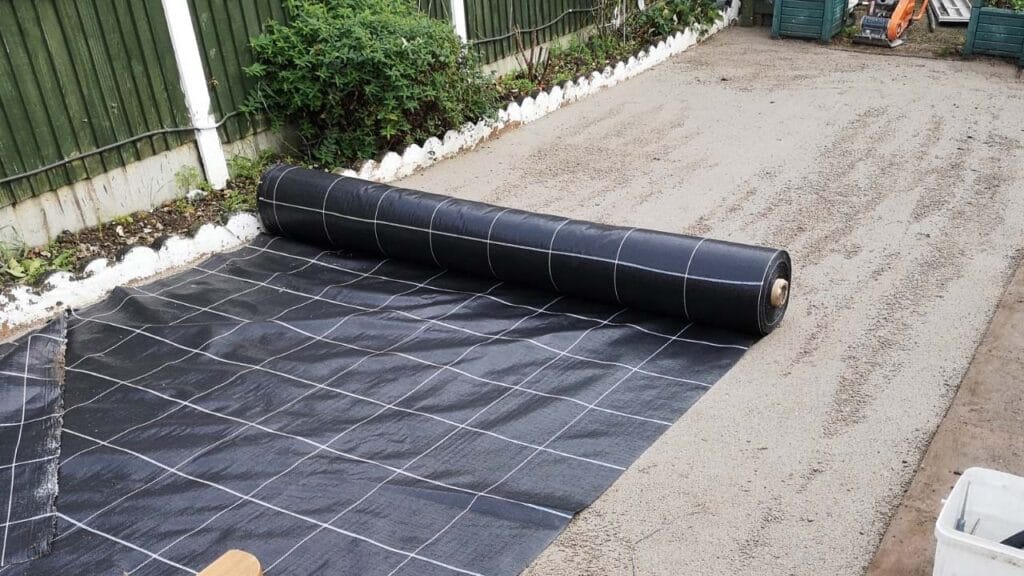
Installing a weed barrier is necessary if you are laying artificial turf on soil which contained plants or trees before. After you have removed the topsoil, there is a possibility that weeds may grow underneath your new artificial turf and create lumps.
Once you install a weed barrier, it will last for about five years. But, since it is decomposable, there is no need to remove it. You can install weed barriers below the sub-base or on top of the sub-base. This process is essential even when you install artificial turf on grass.
Step 3: Create the Sub-Base
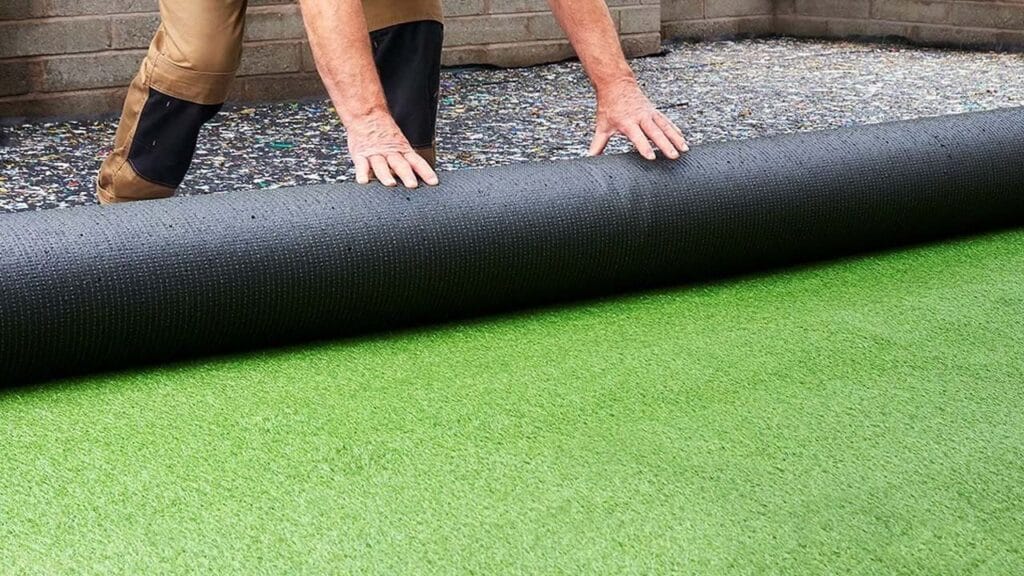
When laying artificial turf on soil, ensure that you have laid the right sub-base and check if the surface is smooth enough. In this step, you will use sharp sand to improve drainage and prevent your lawn from drooping.
Lay out the sub-base over the surface and use a rake to level it until it creates a smooth end. Ensure that the sub-base is firm and level perfectly or else it will create bumps on your artificial turf.
Step 4: Laying Artificial Turf
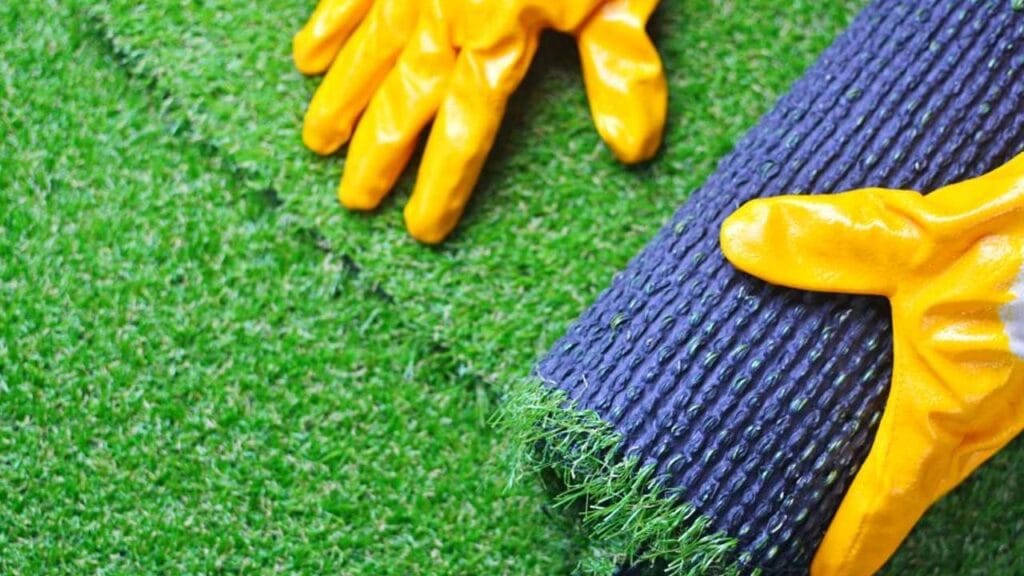
Before installing artificial grass on the soil, ensure that you have trimmed it with a sharp utility knife to perfectly fit in the lawn. While installing artificial turf, do not drag it all over the surface as you will ruin the sub-base.
Artificial turf comes in rolls, so start laying from the nearest edge and then roll outwards. In case you need two rolls of synthetic grass, ensure that the fibres are in the same direction to create a natural look.
Step 5: Join the Turf
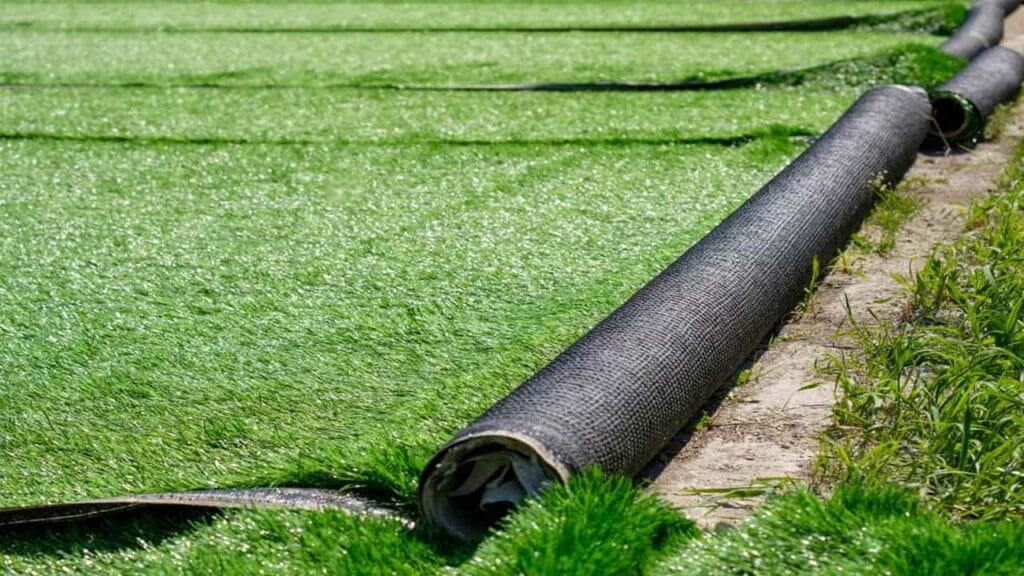
After laying artificial turf, it is now time to join the seams together. Use a jointing tape and fall back the edges of the turf by 300mm. You have to do this on both sides of the turf and spread the jointing tape down the centre.
The blotting side of the tape should face up and the shining side should face down. Using a small nail or adhesive, fix the tape at both ends of the grass. There should be a 2-3mm gap between the two pieces to get a good seam.
Step 6: Secure the Edges
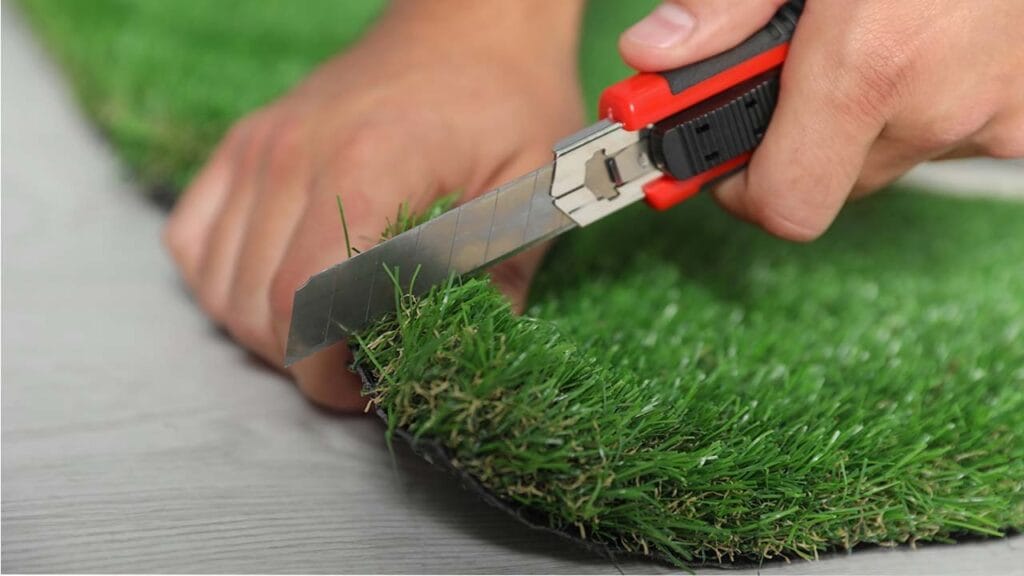
The easiest way to secure the edges is to use landscaping pins. Place them around 6 inches to secure the edges of the artificial grass perfectly. Next, flatten them carefully with a hammer.
If your lawn is decorated with flower beds on the side, then it is recommended to fold the grass over the edges by 50mm to close the sides. You must remember this step while measuring the strips.
Step 7: Add Up Final Touches
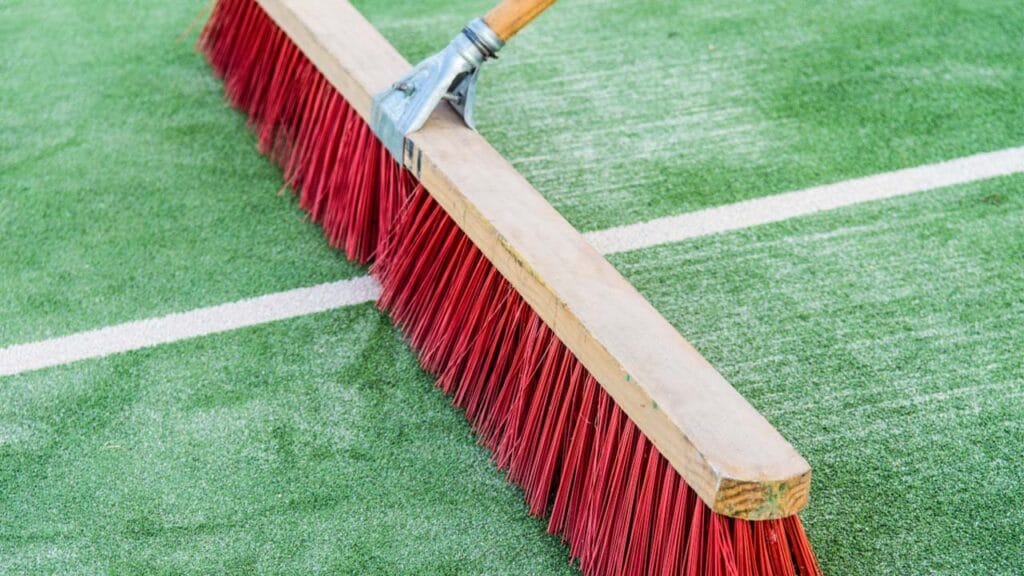
While you are applying the final touches, we suggest adding the infill while laying artificial turf on the soil. By doing this, the fibres will stand upright and make the grass look natural.
The most ideal choice is washed silica sand infill because it protects heavy foot traffic. Once you are done with the infilling, use a broom and clean the dust from the turf.
Leave the infill for a day to set properly and use the grass the next day. Now you can finally enjoy your new, beautiful lawn. If you want to create a sitting area, add two chairs and spend a good evening time with your family!
What is the Best Time of Year to Install Artificial Grass?
The ideal time of year to install artificial turf in the UK is when the weather is dry and warm. It happens mostly during spring and summer. Moreover, it also depends on your
Synthetic grass not only needs dry weather for the adhesive to settle but also requires a warm and cosy temperature. This allows the grass to lay flat after the installation is complete.
When you install artificial turf on cold days, there is a high chance for it to get shrunken and slump. It can make your lawn look unattractive and dull.
Summing Up: Installation of Artificial Turf on Soil
After going through the above-mentioned steps, you might want to start laying artificial turf on the soil right away. If you have all the required tools and materials, you can get started and set up your lawn with synthetic grass.
While you are installing artificial turf on soil, keep in mind that the weather is warm and dry. Ensure that you go through the instructions carefully to avoid any errors afterwards.
If you are tight on budget, then get the best quality artificial grass without any financial stress. At pay weekly, you can pay in instalments after you have selected the artificial turf of your choice.
Faqs
When should you add sand under artificial grass?
Add sand under the artificial grass when it’s completely dry and not damp. The sand infill can create a stable and smooth surface under the turf.
Can you lay artificial grass on the soil directly?
No, you can never lay artificial grass directly on soil because it will ruin the look of your lawn and leave the grass uneven.
How to make artificial grass stay in place?
The best way to prevent your artificial grass from moving is to use a strong adhesive or seaming tape to fix the edges and seams of the grass.

